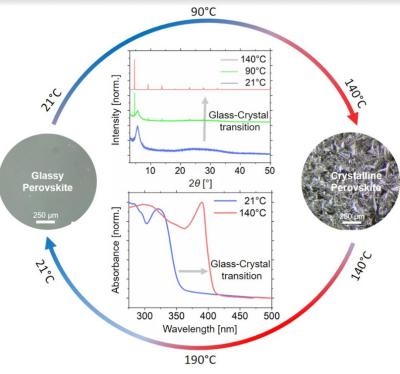Researchers at Duke have examined crystalline metal halide perovskites (MHPs), and found that while crystallinity offers numerous advantages, the ability to access a glassy state with distinct properties can provide unique opportunities to extend the associated structure'property relationship, as well as broaden the application space for MHPs.

Amorphous analogs for MHPs have so far been restricted to high pressures, limiting detailed studies and applications. In their new work, the Duke team structurally tailored a 2D MHP using bulky chiral organic cations to exhibit an unusual confluence of exceptionally low melting temperature (175 °C) and inhibited crystallization.
The team explains that this new study offers critical design criteria for realizing the first stable (at ambient pressure) and switchable glassy state within hybrid perovskites. In addition to the favorable bulky organic spacers, the unique packing and hydrogen bonding characteristics in chiral- versus racemic-NPB lead to striking differences in the thermodynamics of melting and crystallization, thus favoring a facile glass formation in chiral-NPB, unlike racemic-NPB.

